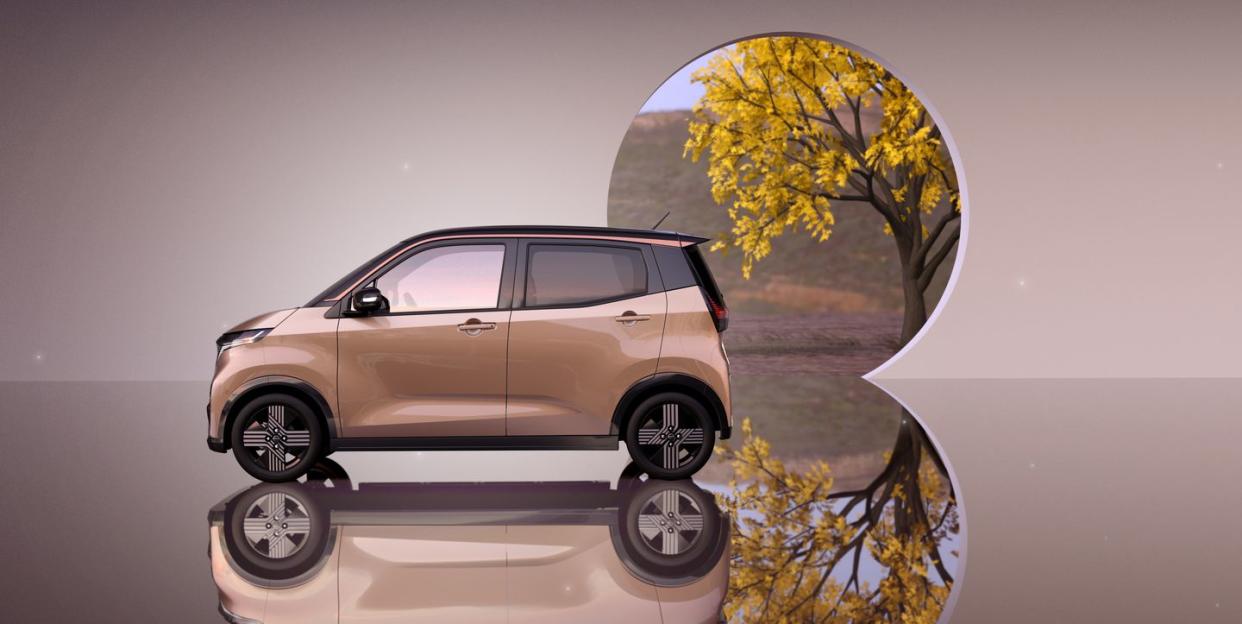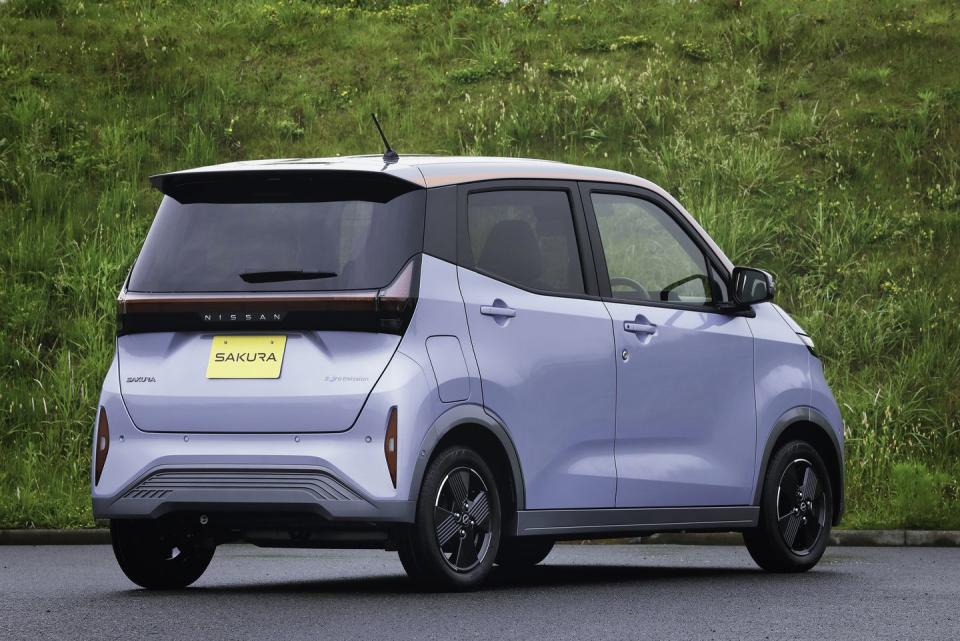The Nissan Sakura Is the $14K EV We Could Use Here

Nissan debuts Sakura kei car EV with 112 miles of range, and a starting price just below $14,000 in Japan.
The Sakura, which has a Mitsubishi twin badged eK X, produces 63 hp and 144 lb-ft of torque, allowing it to reach 80 mph.
The two EVs will be offered in Japan for now, as Nissan and Mitsubishi have seldom offered their kei cars in other markets.
An EV with just over 100 miles of range and a price under $14,000 doesn't sound possible in the present day, considering where EV prices are at the moment, but that's exactly what Nissan has just rolled out in Japan. The Nissan Sakura was revealed just a few days ago, with its exterior dimensions landing it firmly in the kei car class.
The Sakura, however, is a real four-door car with very real capabilities, with its 20.0-kWh battery giving it a range of 112 miles in the the country's WLTC testing cycle.
More importantly, the car named for Japan's traditional cherry blossom offers a window into what economical electric personal transport is like outside of North America.
Powered by single electric motor producing 63 hp and 144 lb-ft of torque, the Sakura has only 2359 pounds to carry around, but will do what we consider normal highway speeds quite easily, topping out at 80 mph.
Of course, the main point of the Sakura is its diminutive dimensions and suitability to extra-urban driving, with an overall width of 58.1 inches, length of 133.7 inches, and a turning radius of 15.7 feet, as well as its ability to carry four people in comfort. A height of 65.2 inches gives it the profile of a boxy minivan, while also buying it some cargo space—if not necessarily for Costco runs. The interior is not bare bones at all, with a 9-inch infotainment screen alongside a 7-inch instrument cluster and plenty of other buttons.

"Three drive modes—Eco, Standard, and Sport—provide optimal performance for different situations," Nissan notes. "Using e-Pedal Step, the driver can decelerate smoothly and steadily by easing off the accelerator pedal—an action that also charges the battery through regenerative braking. The Sakura's speed can be modulated using just the accelerator pedal."
Actually, it's not solely a Nissan model as Mitsubishi is getting its own version by virtue of a close partnership with Nissan, which came about due to a financial bailout by the former of the latter a few years ago. Mitsubishi's version is called the eK X, and it's very similar inside and out, wearing the brand's current corporate front fascia (which, as an aside, looks a lot like the face of a villain robot from a 1980s Japanese cartoon).
It's worth noting that just about the only EV stateside with this range is the Mini Cooper SE Electric, which offers a range of 110 miles in the EPA cycle, but also costs more than twice the starting price of the Sakura. The two cars are not in each other's segments, so this comparison obviously isn't apples to apples, as kei cars are only represented here by gas-engined private imports over the age of 25, with one exception. The lack of a new EV stateside with a starting price under $14,000—let alone under $20,000—could be an opportunity missed as prices of EV models continue their march largely in one direction. Nor are many automakers, with the notable exceptions of Nissan and Fisker, planning models that start south of $30,000.

"The all-new Sakura follows the Leaf and Ariya as a mass-market EV. We believe it will be a gamechanger for the Japanese market and will make EVs much more accessible to customers in Japan," Nissan Executive Vice President Asako Hoshino said.
Before you say that the Sakura is too small for US roads, let us point out that Mitsubishi offered the electric i-MiEV here for some time a decade or so ago, with far less range. And speaking of range, the Mini Cooper SE is not far from the 112-mile mark either, albeit in different testing cycles.
Obviously, the i-MiEV was not for absolutely all kinds of trips you'd do in a car, but then again no EV currently on the market is for every single type of trip either. You'd have a difficult time getting from Denver to Banff in a EV, for instance. As a commuter and grocery getter, however, the i-MiEV and vehicles of its size catered to a specific type of EV user, one who has other cars for longer trips—as do most EV households.
Should Nissan offer the Sakura stateside? Let us know in the comments below.


